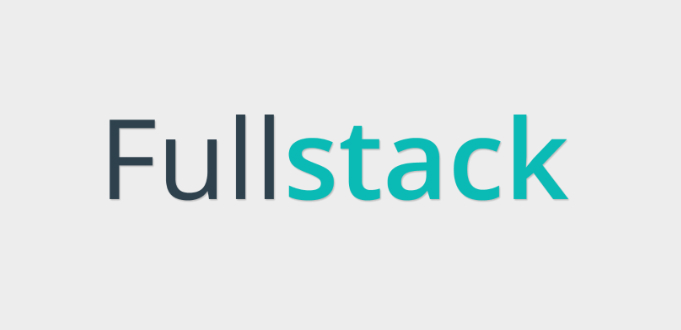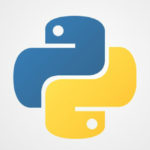What is Full Stack Development?
Full Stack Development is a combination of Front-End Development and Back-End Development and some knowledge of Web Designing. Basically a Full Stack developer should be comfortable in dealing with any stack of web development. Below is the image of stacks in Web Development:

Image Source: SitePoint
A Full Stack Developer deal with the Client side and the Server side, which includes OS, Web Server, Database, Server Side code, Browser and Client Side. Full Stack Developer need not have very in-depth knowledge in every field but should be proficient enough to deal with any of them.
What are the sets of Technology skills required to become a successful Full Stack Developer?
As I mentioned a Full Stack Developer should be comfortable in dealing with any stack of web development, so there is a huge sets of skills which a Full Stack Developer should have knowledge of. Technical skills required are:
System administration:
- Linux and basic shell scripting
- Cloud computing: Amazon, Rackspace, etc.
- Background processing: Gearman, Redis
- Search: Elasticsearch, Sphinx, Solr
- Caching: Varnish, Memcached, APC / OpCache
- Monitoring: Nagios
Linux powering most of the Internet, it’s a de-facto operating system in web development (not to dismiss .NET). In addition, a full-stack developer should know how cloud hosting works, Amazon / Rackspace or other providers and its APIs.
Search is an integral part of most websites – a developer should know how to set up and use search servers such as Sphinx or Elasticsearch.
Caching is also important, Varnish, reverse proxy, Memcached and opcode caching. He needs to know what each of these is and how to use it.
Web development tools:
- Version control: Git, Mercurial, SVN
- Virtualization: VirtualBox, Vagrant, Docker
Today, it’s unnaceptable not to use version control, even if you’re a solo developer.
With virtualisation tools, having separated development environments on a per project basis is really nice to have, and easy to set up with VirtualBox and Vagrant at least.
If you want to work with Vagrant you also need to know the basic syntax of Ruby and shell scripts as well.
Back-end tech:
- Web servers: Apache, Nginx
- Programming language: PHP, NodeJS, Ruby
- Database: MySQL, MongoDB, Cassandra, Redis, SQL / JSON in general
Apache and Nginx are the norm for web development. A full-stack developer should know how to set up these applications and serve the contents of his website.
PHP is what needs to be mastered on a high level, NodeJS, Ruby is nice to know as well.
In addition to web server and programming languages, database management is also a requirement for a full-stack developer which in itself is another beast.
Relational (such as MySQL, PostgreSQL) vs non-relational databases (like MongoDB, Redis or Cassandra) are differences the full-stack developer needs to know, along with knowing the syntax of XML / JSON.
Front-end tech:
- HTML / HTML5: Semantic web
- CSS / CSS3: LESS, SASS, Media Queries
- JavaScript: jQuery, AngularJS, Knockout, etc.
- Compatibility quirks across browsers
- Responsive design
- AJAX, JSON, XML, WebSocket
Here comes the fun part. If you want to present your website, you’d better know these and all their quirks.
JavaScript was a joke in the early days, grown into one of the most popular and powerful languages today. New methodologies and frameworks are popping up each day, MVC, MVVM, MVP, Angular, Knockout, Ember, etc.
Alongside HTML, CSS, Javascript, a full-stack developer should also know about responsive design and how to work with media queries and CSS preprocessors like LESS and SASS.
One should also know how to communicate with the back-end via AJAX or WebSockets.
Design:
- Converting website design into front-end code
- UI
- UX
In addition to front-end technologies, a full-stack developer also understands what is possible and what not to create with the constraints of HTML / CSS / Javascript and convert the design (Photoshop/Illustrator files) accordingly.
With many of the mentioned technologies a developer can get away with not knowing to code or use, such as Ruby or specific JavaScript libraries, but all these are interconnected in one way or another.
For example if you want to set up Vagrant you need to know Ruby’s syntax, as simplified as it is or if you want to manipulate DOM elements, jQuery is a good to know technology.

One other category that deserves mentioning is mobile technologies. It’s a very dynamic industry and closely related to web development:
- iOS
- Android
- Hybrid: PhoneGap, Appcelerator
One of the biggest disparities today is between web and mobile development, but the gap is rapidly closing.
A full-stack developer should know about these technologies as well.
Source: SitePoint
What money you can expect to earn as a Full Stack Developer?
Whether you choose to specialize in front end or back end development — or position yourself as a full stack generalist — the job outlook is positive. The role of software developer is recognized by the U.S. Bureau of Labor Statistics as one of the occupations that will have the most growth over the next ten years. In 2014, just over 718,000 people were employed in some capacity as software developers — and the nationwide median salary was $95,510, That number is expected to rise by 135,000 jobs to more than 853,000 by 2024.
Source: logz.io
I would recommend you all to read these 3 articles, they are worth reading:
The Rise And Fall Of The Full Stack Developer
Full-Stack Developer Salary: What can you expect to make?
Front End vs Back End vs Full Stack: Web Developers & Demand
What are the best resources to learn Full Stack Development?
One should start to learn Full Stack Development when they have some basic knowledge of Front-End Development, I would recommend you to read this article to know more about Front-End Development.
So, Now you know that Full Stack developers are awesome, they have a lot of knowledge about various technologies, plus they have a good salary and full stack development job in only going to increase with the coming time.
So what are the best resources to learn Full Stack Development? I will be helping you with that. Here are some of the best online courses available to learn Full Stack Development:
All these courses mentioned below are awesome, but the one’s with
are (awesome)².
- The Complete Web Developer Course 2.0 (Udemy)

- The Web Developer Bootcamp (Udemy)

- Full Stack Web Developer Nanodegree (Udacity)

- Ultimate Web Designer & Developer Course: Build 23 Projects! (Udacity)

- Become a Full Stack Developer (Full Stack Developer Path by Lynda)

- Learn and Understand NodeJS (Udemy)
- The complete JavaScript developer: MEAN stack zero-to-hero (Udemy)
- Build Complete Web Solutions (Coursera)
Full Stack JavaScript (TreeHouse)
- The Full Stack Web Development (Udemy)

Best Books to learn Full Stack Development are:
**Clicking on any book will take you to your local Amazon store.
Few other good resources to visit to learn Full Stack Web Development and stay updated are:
- Hack Reactor
- Free Code Camp
- Mozilla Developer Network
- JavaScript The Right Way
- MySQL Documentation
- Full Stack Academy
- Full Stack Python
I want to make this blog a platform for the learners to find best resources and Online Courses available for particular technologies, So I request you all to please share any new resources you know of and will be helpful for everyone, in the comment section below and I will add the same in the article.




















